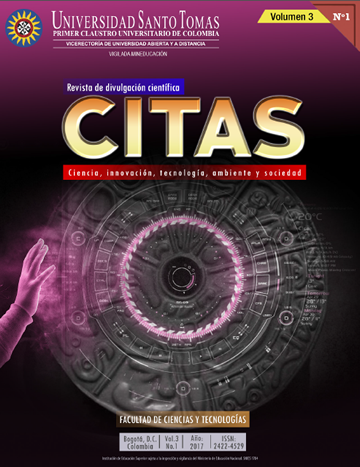Innovación, un acercamiento a su concepto, alcance, elementos y capacidades que la generan
Innovation, an approach to its concept, reach, elements and capacities that generate it
Abstract (en)
Innovation is understood as a way to introduce something to a product, process, marketing method or organizational among others, “new or significantly improved” the market, so it is important for Developing Countries (PED) determining the scope, different levels of innovation in a given context, and that to achieve this there must be a set of capabilities (absorption and innovation) and resources, in order to identify areas that should be prioritized strengthening technological capacity.
Abstract (es)
La innovación es entendida como la forma de introducir algo a un producto, proceso, método de comercialización u organizativo entre otros, “nuevo o significativamente mejorado” al mercado, por lo que es importante para los Países en Desarrollo (PED) determinar el alcance o diferentes niveles de la innovación, en un contexto determinado, y que para lograrlo se debe contar con un conjunto de capacidades (de absorción e innovación) y recursos, para así poder identificar las áreas en que se debe priorizar el fortalecimiento de la capacidad tecnológica.
References
Bermúdez, E. (2014, agosto 23). Rafael Molano: el cerebro detrás de los ponqués Ramo. El Tiempo. Recuperado en: http://www.eltiempo.com/estilo-de-vida/ gente/historia-de-rafael-molano-fundador-de-ponques-ramo/14427959
Gutti, P. (2015). Clase 6 - Convergencia: el rol de las “capacidades.” Buenos Aires.
Lugones, G. E., Gutti, P. & Le Clech, N. (2007). Indicadores de capacidades tecnológicas en América Latina (No. 89).México: Naciones Unidas.
OEDC. (2005). Manual de Oslo: guía para la recogida e interpretación de datos sobre in-novación. Recuperado en: http://www.itq.edu.mx/convocatorias/manualdeoslo.pdf
Real Academia Española. (2014). Diccionario de la lengua española. Recuperado en: http://lema.rae.es/drae/?val=fenomeno
RYCIT, OEA, Colciencias & Ocyt. (2001). Manual de Bogotá: Normalización de Indicadores de Innovación Tecnológica en América Latina y el Caribe. Recuperado en: http://www.ricyt.org/manuales/doc_ view/5-manual-de-bogota
How to Cite
License
The authors sign a transfer of rights so that Universidad Santo Tomás can publish the articles under the conditions described below. The authors, readers and other users are free to share, copy, distribute, perform and publicly communicate the work under the following conditions:
-
Attribution — You must give appropriate credit, provide a link to the license, and indicate if changes were made. You may do so in any reasonable manner, but not in any way that suggests the licensor endorses you or your use.
-
NonCommercial — You may not use the material for commercial purposes.
-
ShareAlike — If you remix, transform, or build upon the material, you must distribute your contributions under the same license as the original.
No additional restrictions — You may not apply legal terms or technological measures that legally restrict others from doing anything the license permits.
CITAS is licensed under Creative Commons Attribution-NonCommercial-ShareAlike 4.0 International (CC BY-NC-SA 4.0).

Until 2019 the documents published in the magazine were under the Creative Commons Attribution-ShareAlike license (CC BY-SA), however, in order to guarantee the open and free distribution of the content published in the magazine, it was decided to change the type Commons Attribution-NonCommercial-ShareAlike 4.0 International license (CC BY-NC-SA 4.0)






